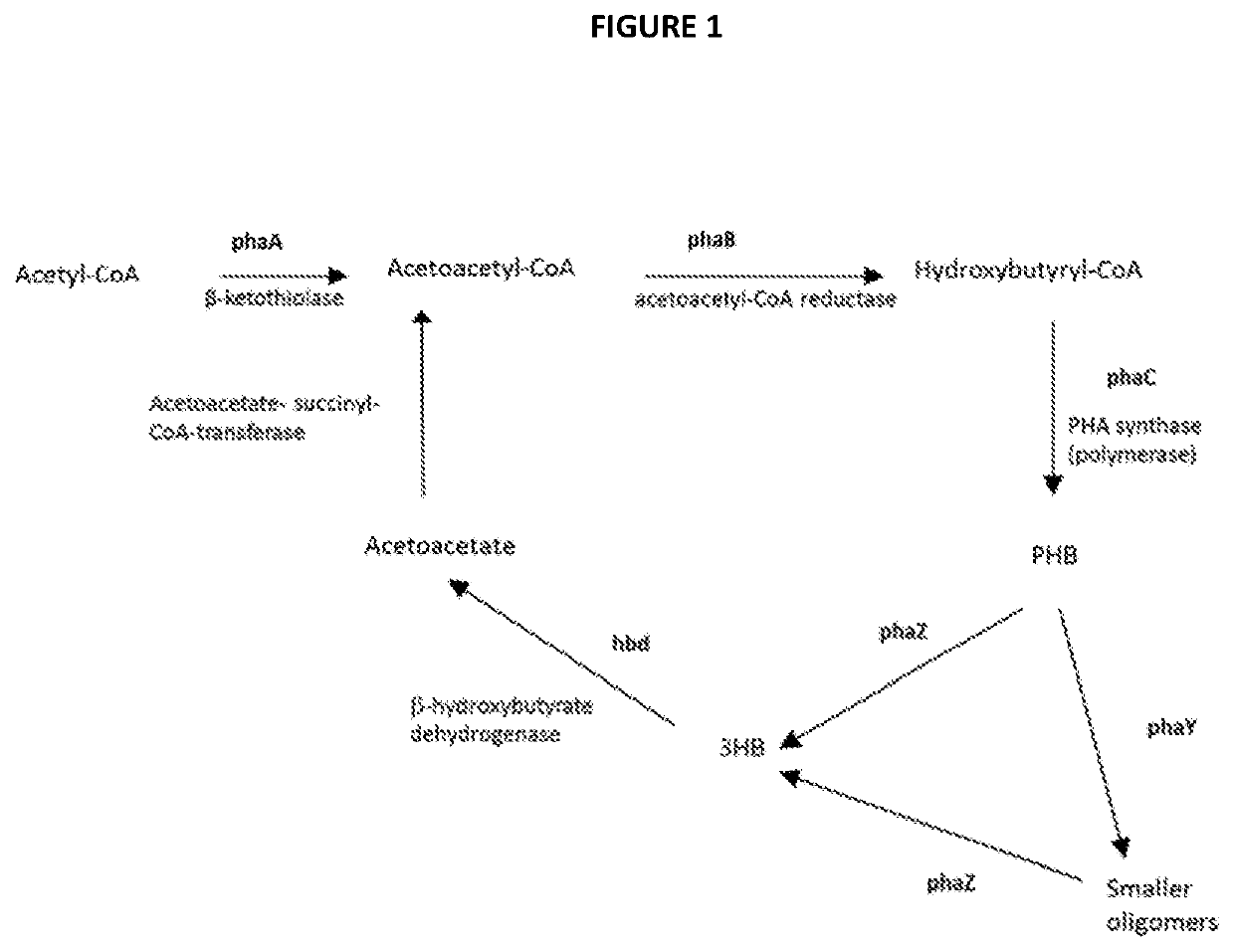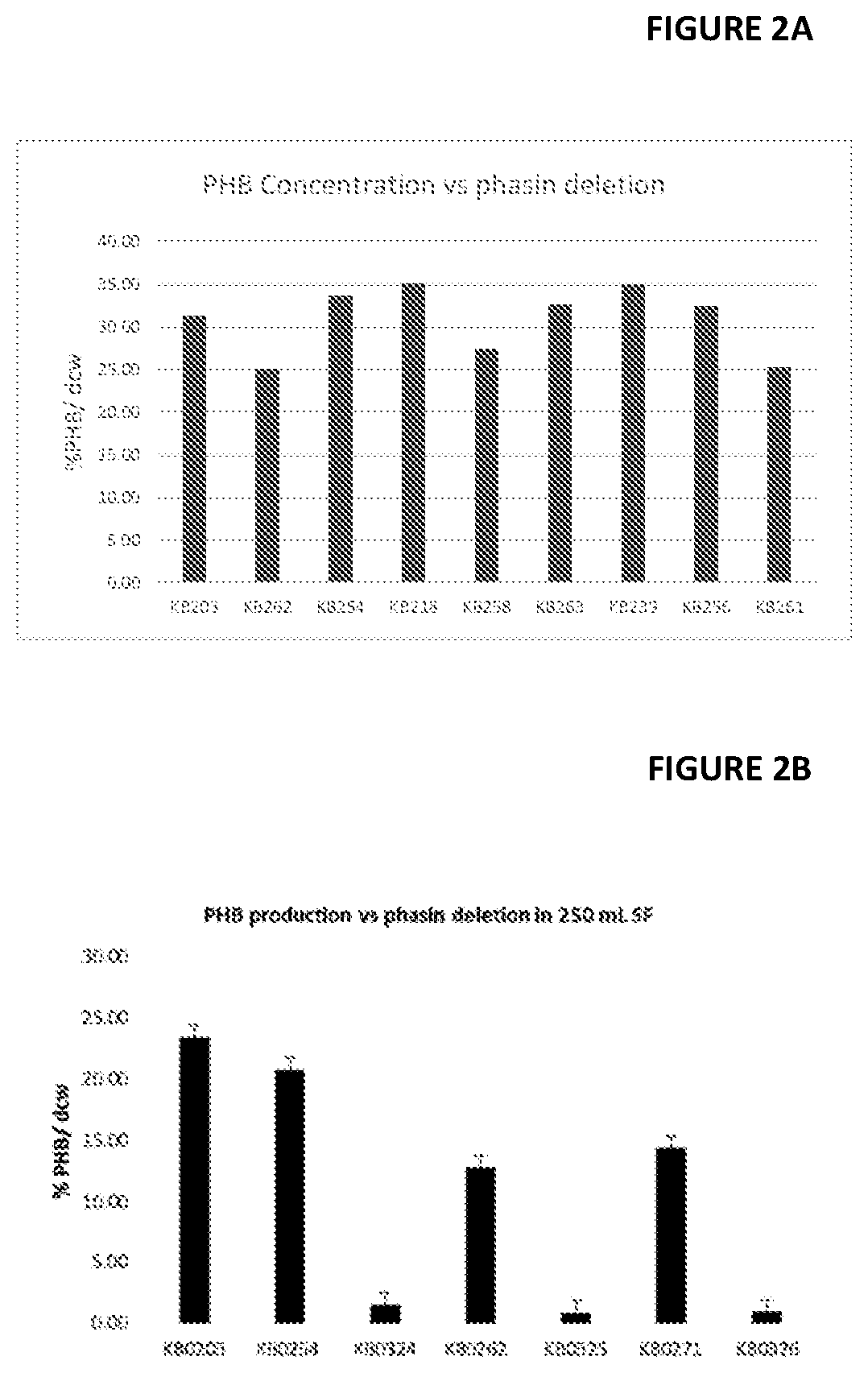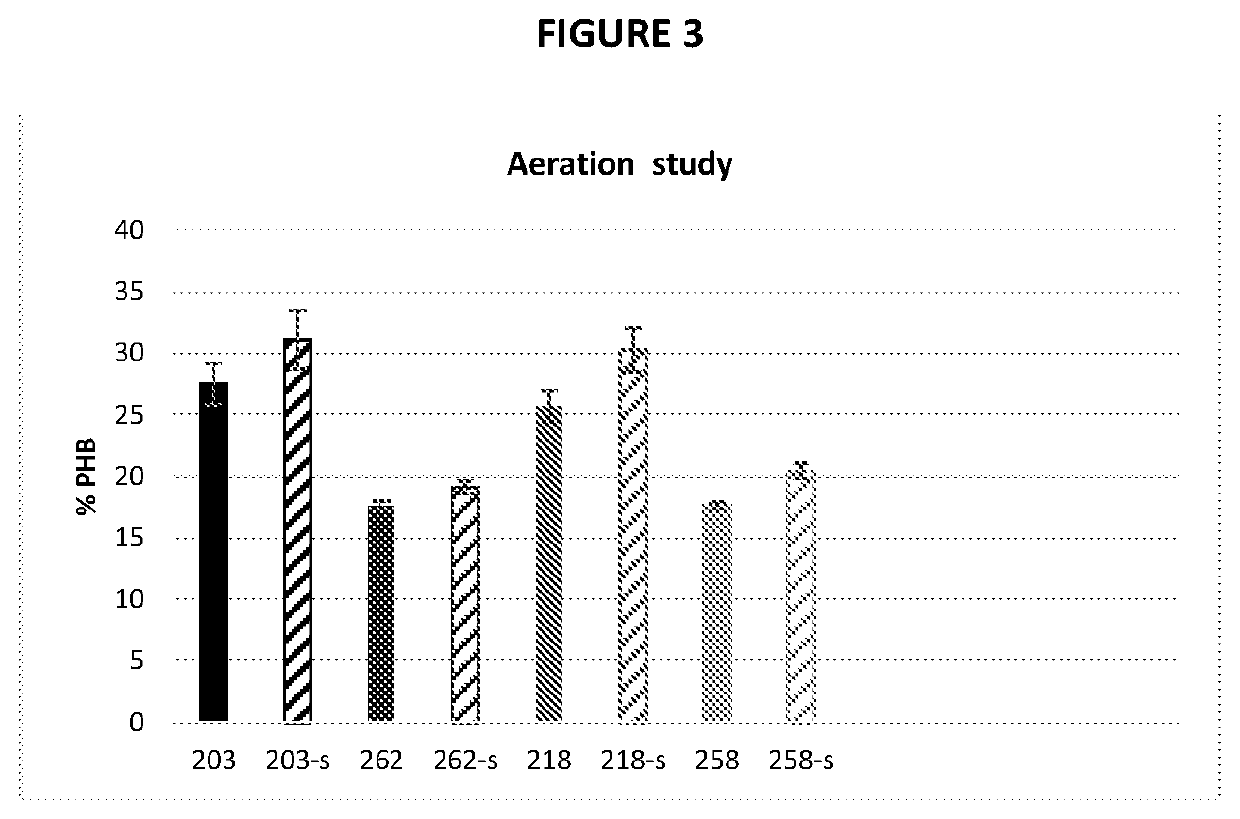Microbial Production of Protein and PHB by Alcohol Utilizing Bacteria
- Summary
- Abstract
- Description
- Claims
- Application Information
AI Technical Summary
Benefits of technology
Problems solved by technology
Method used
Image
Examples
example 1
of Phasins
[0181]Sequence analysis of M. extroquens PA1 genome was used to identify three putative phasins: Mext_0493, Mext_2223, and Mext_2560. According to sequence homology, Mext_2223 matches AM1 gap11 and Mext_2560 matches gap20. Deletion of Mext_2223 resulted in a dramatic decrease in PHB production (See FIG. 2B): about 1% PHB produced in M. extorquens KB0324 (about 95% decrease), while deletion of Mext_2560 resulted in a 20-50% decrease, depending on the culture conditions, such as volume, aeration (less DO leads to an increase in PHB), temperature (temperature over 30° C. increases PHB) and feeding strategy (nutrient limitation leads to an increase).
[0182]Methylobacterium extorquens Strain Genotypes:
KB0203 (PA1 derivative)
KB0254: KB0203 ΔMext_0493
KB0262: KB0203 ΔMext_2560
KB0271: KB0203 ΔMext_0493 ΔMext_2560
KB0324: KB0203 ΔMext_0493 ΔMext_2223
KB0325: KB0203 ΔMext_2560 ΔMext_2223
KB0326: KB0203 ΔMext_0493 ΔMext_2560 ΔMext_2223
[0183]KB0218: derivative of KB0203
KB0258: KB0218 ΔMext...
example 2
Culture Conditions on PHB and Protein Production
[0186]FIG. 3 shows the results of an experiment investigating the effect of decrease in oxygen (aeration). An aeration study was conducted in shake flask at 32° C. with SP5 (salt and minerals) media. Strains KB0203, KB0262, KB0218 and KB0258 were cultivated in either 25 ml SP5+0.4% Methanol in 125 ml flask or 15 ml SP5+0.4% Methanol in 100 ml small mouth flask which resulted in a decrease in oxygenation. “s” indicates use of a small mouth flask in the graph. At the end of fermentation, cell sample was centrifuged at 4° C., 4000 rpm during 20 minutes. Pellets were then washed once in 0.05× Phosphate Buffer Saline (PBS) solution, centrifuged and lyophilized Intracellular PHB was converted to crotonic acid by treating approximately 5 mg of lyophilized cells with 0.5 mL concentrated sulfuric acid, and holding at 100° C. for 30 minutes. The solution was then cooled, diluted with 2.5 mL MilliQ water, and centrifuged at 4300 rpm for 2...
example 3
PHB on Survivability
Shrimp Data
[0192]Survival of Pacific white shrimp, Litopenaeus vannamei, on diets that contained PHB in bacterial biomass (BB) versus diets without PHB were investigated. 3 trials of 6 weeks each were conducted. The trial 1 utilized 3 treatments with 4 replicates in each treatment. It was conducted in a semi-closed recirculation system. Juvenile shrimp were stocked into 12 tanks with 8 shrimp in each aquarium (160 L). Based on historical results, a fixed ration was calculated assuming a 1.8 feed conversion ratio and a doubling in size the first two weeks and 0.8-1.3 g week−1 thereafter. The trial 2 utilized 6 treatments with 4 replicates in each treatment. Juvenile shrimp were stocked into 24 tanks with 10 shrimp in each aquarium (80 L). Shrimp were counted to readjust daily feed input on a weekly basis. In trial 2 and trial 3, the recirculating system consisted of 24 aquaria (135 L) connected to a common reservoir, biological filter, bead filter, fluidized biolo...
PUM
| Property | Measurement | Unit |
|---|---|---|
| Temperature | aaaaa | aaaaa |
| Temperature | aaaaa | aaaaa |
| Fraction | aaaaa | aaaaa |
Abstract
Description
Claims
Application Information
 Login to View More
Login to View More - Generate Ideas
- Intellectual Property
- Life Sciences
- Materials
- Tech Scout
- Unparalleled Data Quality
- Higher Quality Content
- 60% Fewer Hallucinations
Browse by: Latest US Patents, China's latest patents, Technical Efficacy Thesaurus, Application Domain, Technology Topic, Popular Technical Reports.
© 2025 PatSnap. All rights reserved.Legal|Privacy policy|Modern Slavery Act Transparency Statement|Sitemap|About US| Contact US: help@patsnap.com



